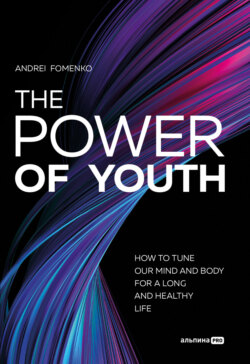Читать книгу The Power Of Youth. How To Tune Our Mind And Body For A Long And Healthy Life - Андрей Фоменко - Страница 6
CHAPTER 1
AGING AND YOUTH
AGING AS A PROCESS PROGRAMMED BY NATURE
ОглавлениеEvolutionary theories of aging imply that aging is the result of the organism following a biological "schedule" regulating the main stages of human life: birth, growth and development, growth impairment, stagnation, biodegradation, and death. In the view of advocates of this approach, aging gives an advantage in the survival of a particular population and is evolutionary "beneficial" for species. In the first place, it is about resource allocation: individuals who have lost their reproduction capability shall age and die in order not to compete for resources with the younger generation.
There are some examples of the evolutionary theories of aging.
● Theory of programmed longevity. Throughout life, certain genes are "turned on" and others are "turned off" by nature, i.e., regulation of aging processes is embedded at the DNA level.
● Neuroendocrine theory. It suggests that aging is an impaired hormonal balance. This theory appeared in the XIX century, and in the early XX century experiments on transplanting various endocrine glands (ovaries and testicles, adrenal glands, basal glands) from young animals to elderly ones became popular. Today, some scientists associate aging with changes in insulin and insulin-like growth factor (IGF) signaling[6].
● Immunologic theory of aging. It views aging as a consequence of an evolutionarily programmed process of "immunological decline" that occurs with age. The efficiency of immunity peaks during adolescence. The ability to resist infections, destroy harmful microbes, identify mutated cells, and respond to vaccines, decreases over the which makes the body vulnerable to the negative joint action of external and internal factors, leading to disease and death. One of the key aspects underlying immunologic aging is the immunosenescence[7] – age-related changes in the thymus gland responsible for training immune cells[8].
6
Van Heemst D. Insulin, IGF-1 and longevity. Aging Dis. 2010 Oct;1(2):147-57. Epub 2010 Aug 26. PMID: 22396862; PMCID: PMC3295030.
7
Immunosenescence begins at 5–7 years and completes by puberty, but small fragments of active glandular tissue persist throughout a human's life. – Ed. note.
8
Thomas R., Wang W., Su D. M. Contributions of Age-Related Thymic Involution to Immunosenescence and Inflammaging. Immun Ageing. 2020 Jan 20;17:2. doi:10.1186/s12979-020-0173-8. PMID: 31988649; PMCID: PMC6971920.
